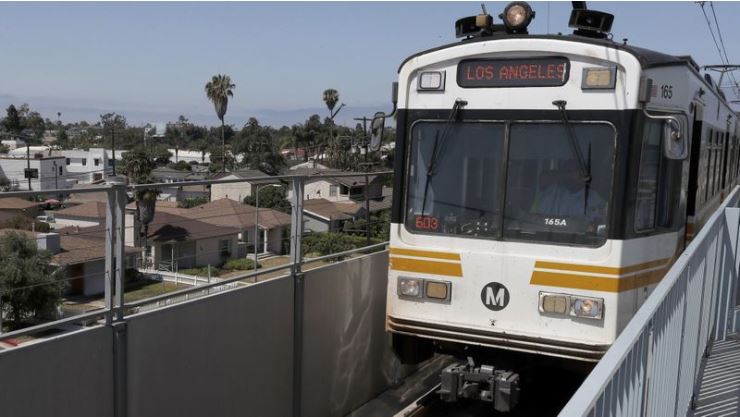LA’s Trying to Build Transit-Oriented Affordable Housing
But could we make it easier?
 My colleague Jonathan Zasloff rightly points out that one way to harness the benefits of upzoning to alleviate our housing crisis is to promote inclusionary requirements for transit-oriented development. Los Angeles has adopted just such a program through its Transit-Oriented Communities ordinance, which I’ve written about here.
My colleague Jonathan Zasloff rightly points out that one way to harness the benefits of upzoning to alleviate our housing crisis is to promote inclusionary requirements for transit-oriented development. Los Angeles has adopted just such a program through its Transit-Oriented Communities ordinance, which I’ve written about here.
Per the City of Los Angeles’ initial assessment, the TOC Program appears to be on track to increasing the number of permitted affordable housing units: 250 projects have requested TOC incentives from the City, and if approved and constructed, about 2,000 affordable housing units would come online as a result. The City’s Planning Director explains that the TOC Program appears to be generating more affordable housing than other incentives programs, including the State’s density bonus law.
But even though the TOC Program has been met with enthusiasm—through June 2018, 19 percent of entitlement applications requested TOC incentives—it comes with some not-insignificant hurdles:
- According to CRA/LA, redevelopment plan density limits supersede the TOC ordinance. The successor agency to Los Angeles’ former Community Redevelopment Agency, CRA/LA, has taken the position that in several redevelopment areas, including Wilshire Center/Koreatown, City Center, Hollywood, and the Central Industrial area, existing density limits set by Community Redevelopment Plans would preclude the use of TOC bonuses that would allow greater density. At this time, the City seems to concur that developers seeking TOC bumps in those redevelopment areas will be constrained by the limits in the redevelopment plans. CRA/LA has estimated that this conflict impacts at least 25 projects, including over 200 affordable housing units and over 50 permanent supportive housing units, mostly in the Hollywood and Wilshire Center/Koreatown areas. And as applications for additional multifamily housing projects in these areas continue to roll in, the conflict may worsen.
- The TOC Program does not offer CEQA streamlining benefits. Although certain incentives available to qualifying projects—for example, FAR bonuses and parking incentives—are ministerial, meaning that they do not require the kind of discretionary approval process that would open a project up to review under the California Environmental Quality Act, the Program also offers additional menu incentives that are provided at the City’s discretion, which could potentially open the door to a CEQA challenge. And projects over 50 units in the City of Los Angeles are required to submit to a discretionary site plan review; the City has taken the position that site plan review applies even to otherwise ministerial TOC projects, making them subject to CEQA. The City’s analysis also suggests that the site plan review trigger is based on the number of post-incentive, not base, units. In other words, if a project would have been by-right, but, by virtue of taking advantage of a TOC bonus, ends up including more than 50 units, it would be subject to discretionary site plan review. Developers looking to go the by-right route to avoid CEQA challenges may therefore elect not to apply TOC bonuses in some cases.
- TOC doesn’t apply to projects that use a zone change to add residential units or floor area. The TOC ordinance says that the TOC Program can’t be used if a project is receiving “any development bonus or other incentive granting additional residential units or floor area provided through a General Plan Amendment, Zone Change, Height District Change, or any affordable housing development bonus in a Transit Neighborhood Plan, Community Plan Implementation Overlay (CPIO), Specific Plan, or overlay district.” This potentially restricts the use of TOC incentives in a couple of ways. The first is that certain industrially-zoned areas in the City—including areas close to major transit lines—are use restricted such that a zone change would be required to site residential units on them, making them ineligible for TOC incentives. And the second gray area involves properties that were subject to a conditional zone or height district change when the TOC ordinance was enacted. While the TOC ordinance clearly applies to existing zoning, when conditional zone changes come into the mix, things get more complicated. For example, if a property was already entitled for a zone change, but the zone change is subject to a “Q,” or qualified, condition, meaning that the zone change is effective when the condition has been met, is the “existing zoning” for purposes of TOC the approved zoning, with the Q condition attached, or the prior zoning? And does the fact that the Q condition has not yet cleared mean that the project is receiving a bonus through zone change, rendering it ineligible for TOC incentives? This ambiguity could further restrict application of the TOC Program.
Transit-oriented affordable housing can be a win-win for our sustainability and housing goals; thinking about ways to make this kind of housing easier to build is an important part of the conversation about reducing VMT and rethinking growth in our cities. Los Angeles’ TOC Program represents an admirable effort to site denser development in transit-supported areas. And while the Program is off to a good start, reducing or eliminating some of these hurdles could expand its reach.







Reader Comments